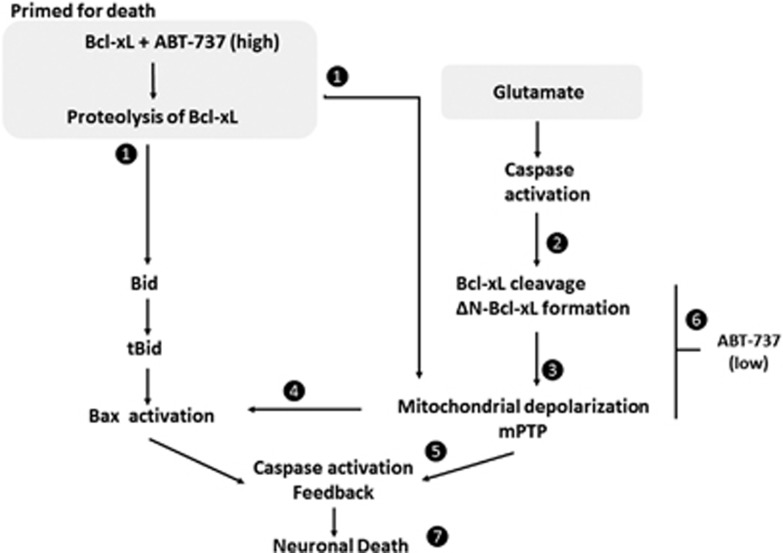Figure 9.
Differential regulation of cell death by high or low ABT-737. High ABT-737 exposure does not by itself cause cell death, but it induces the loss of full-length Bcl-xL through a non-specific proteolysis-dependent mechanism and indirectly causes mitochondrial depolarization and energy loss (1). Loss of Bcl-xL also releases BID to be ready to activate Bax upon a death stimulus (primed for death status; (1)). Under conditions of glutamate toxicity, caspase activation leads to specific cleavage of full-length Bcl-xL to form ΔN-Bcl-xL (2). Both calcium influx and ΔN-Bcl-xL act together to depolarize mitochondrial inner membrane (3), leading to Bax activation (4), cytochrome c release and further activation of caspases, initiating a positive feedback loop (5) of enhanced propensity toward neuronal death. Low ABT binds to ΔN-Bcl-xL (6), preventing the depolarization of the mitochondrial inner membrane, mPT and Bax activation, thereby preventing downstream neuronal death (7)

